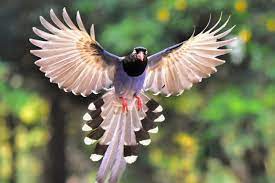
5% of birds in India are endemic: Zoological Survey of India publication: The Zoological Survey of India (ZSI) unveiled a recent publication titled “75 Endemic Birds of India” on the occasion of its 108th foundation day. This publication emphasises an astonishing fact: 5% of India’s bird species are limited completely within the country’s borders, making them unique avian gems that have not been reported anywhere else on the planet.
Daily Current Affairs Quiz: August 2023
India’s Avian Abundance
With an impressive collection of 1,353 documented bird species, India boasts a significant share of the global avian diversity, accounting for approximately 12.40%. Among these feathered inhabitants, a total of 78 species, or 5% of the avian population, are exclusively endemic to the Indian subcontinent.
Avian Distribution: Patterns Across the Nation
The publication unveils intriguing insights into the distribution patterns of these 75 endemic bird species. Hailing from 11 distinct orders, 31 families, and 55 genera, these birds are a testament to India’s diverse landscapes.
Remarkably, the Western Ghats emerge as a hotspot for endemism, sheltering 28 of these exclusive species. Among the inhabitants of this biodiversity-rich region are the captivating Malabar Grey Hornbill, Malabar Parakeet, Ashambu Laughing Thrush, and White-bellied Sholakili.
Avian Distribution: The Andaman and Nicobar
The Andaman and Nicobar Islands harbor a distinctive collection of 25 bird species found nowhere else. Because of the region’s physical isolation, unusual species such as the Nicobar Megapode, Nicobar Serpent Eagle, Andaman Crake, and Andaman Barn Owl have emerged.
Conservation Status of Endemic Species
Out of the 78, a staggering 25 are deemed ‘Threatened‘ by the IUCN. Three species – Bugun Liocichla, Himalayan Quail, and Jerdon’s Courser – face the dire designation of ‘Critically Endangered’.
India’s endemic avifauna further comprises five ‘Endangered‘ species and 17 ‘Vulnerable’ species, with an additional 11 species labeled ‘Near Threatened’ on the IUCN Red List.
Preserving Endemic Species
The publication also highlights the crucial necessity for collaborative endeavors in protecting endemic species. Given their limited distribution, it becomes imperative to conserve their habitats to prevent their decline.
Furthermore, there is considerable importance in promoting awareness among the general populace, particularly students, regarding these species that inhabit distinct regions.
Key Points for Competitive Exams
- Zoological Survey of India Director: Dhriti Banerjee





